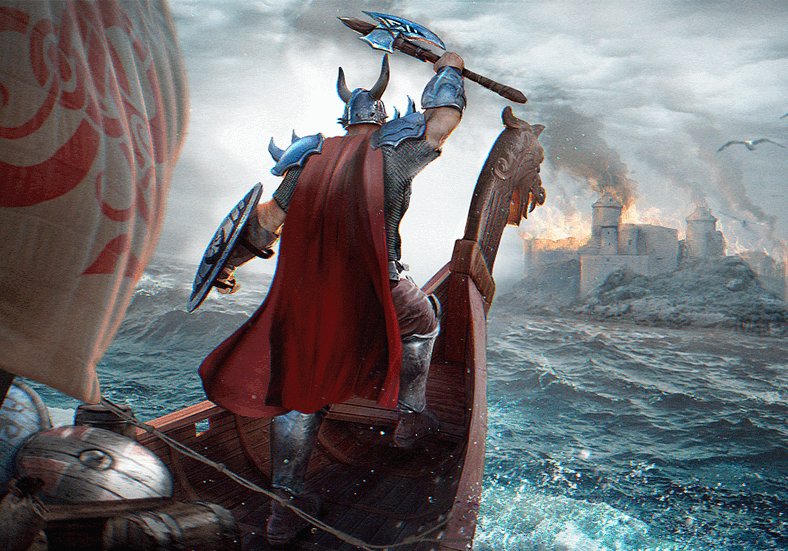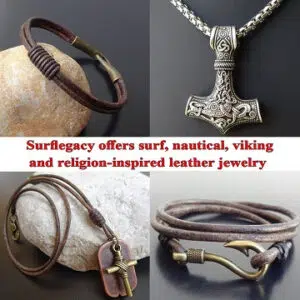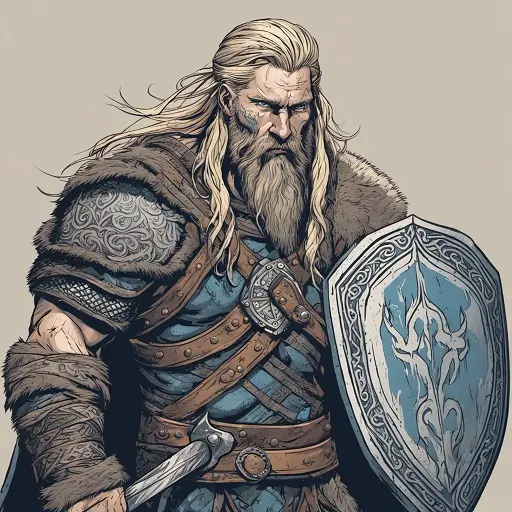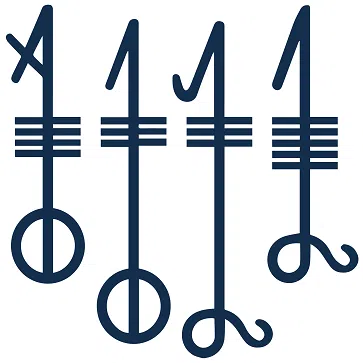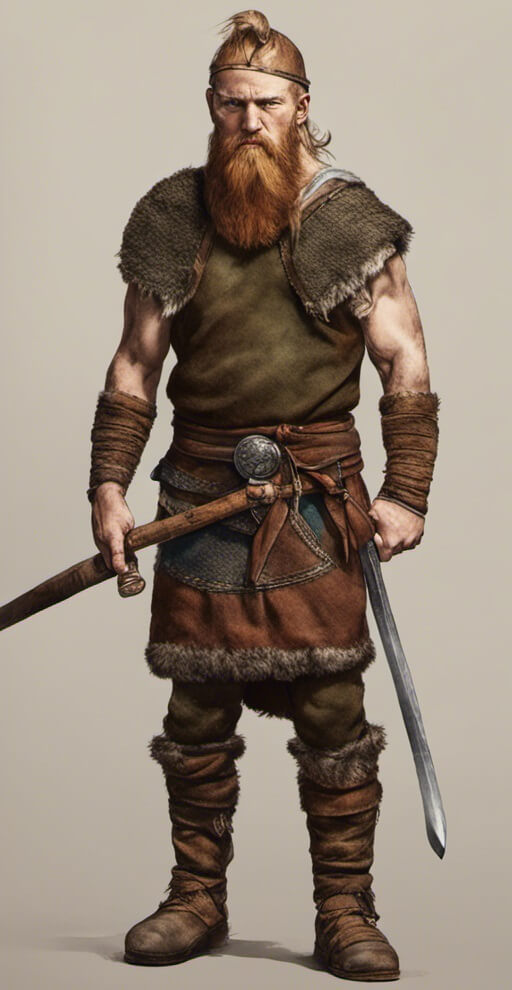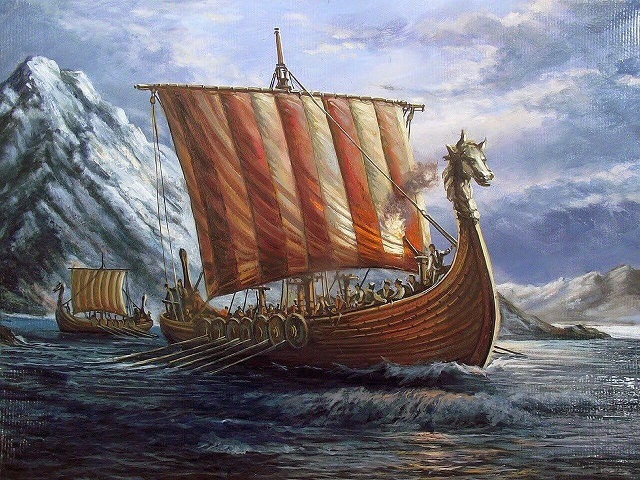Danish, Swedish and Norwegian peoples who inhabited northern Europe in the early Middle Ages, also known as Norsemen; the term Vikings was used to define Scandinavian raiders, especially Norwegians.
The concept of the ‘Viking Age’ was introduced in the late 19th century, but modern science circumscribes chronological boundaries slightly differently depending on the specific discipline.
Based on written sources, historians normally assume 793 (the year of the raid against the English monastery of Lindisfarne) as the beginning and 1066 (battles of Stamford Bridge and Hastings and subsequent Norman conquest) as the end of the Viking Age.
Archaeologists and art historians accept these historical dates, but point out the existence of a continuity in Viking material culture from 750/775 until 950/975 and from these years into the 12th century.
In art history and archaeology, the period is normally treated according to a tripartite model: the Proto-Viking (750/775-875), Middle Viking (ca. 875-975) and Late Viking (975-1100/1125) periods.
The Vikings Raids
The first Vikings raids probably followed the main trade routes. Archaeological finds in Scandinavia, the eastern Baltic, and continental Europe prove that the flow of trade was never interrupted during the dark ages and, in the 8th century, appears to have been particularly prosperous.
Important trading centers were founded in Scandinavia during the 8th and early 9th centuries: Ribe and Hedeby (Haithabu) in Jutland (Denmark), Birka on Lake Mälaren (Sweden), and Kaupang in Vestfold (Norway).
Technology in the field of shipbuilding was highly developed among the Vikings long before they began their raids, as attested both by the raids themselves and by the finding of the Oseberg ship (Oslo, Vikingskipshuset Mus.), dated to 820 on the basis of dendrochronological analysis.
In the first half of the 9th cent. raids seem to have been conducted by a small number of vessels, with disruptive actions, but the first one, directed against the monastery of Lindisfarne, on the Northumbrian coast, is recorded in 793 and was followed the following year by a raid against another monastery, probably Jarrow or Wearmouth; thereafter England seems to have been neglected until the 1930s.
Attacks on Irish monasteries began in 795 and eight or ten more are recorded before the Scandinavians first wintered in 840 and built their first settlement the following year. The raids on the territory of the Carolingian empire, documented from 799 onward, were concentrated on the coast of Friesland and seem to have primarily targeted the merchant towns of Dorestad and Quentovic.
In the Middle Viking period, beginning in the mid-9th cent, it seems that the raids had changed characteristics: the Vikings began to spend winters in Ireland and Frankish territory in the 40s and in England in the 50s of the 9th cent. 9th; from then on better organized fleets of ships, with armed contingents led by their chiefs, went up the rivers plundering the countryside and extorting considerable ransom dues from towns and monasteries, while the characteristic devastations carried out by the Vikings on a large scale and the first settlements in Western Europe date mainly from the second half of the 9th cent.
In England the ‘great army’ (micel here) arrived in 866 from France, conquering over the next decade much of the northern part of the region; the peace agreement concluded in 866 between the Wessex king Alfred the Great (871-899) and the Viking chieftain Guthrum I (d. in 890) established a Scandinavian area of settlement (Danelaw) including eastern Anglia and parts of Mercia.
The rule, however, was short-lived, and in the years between 902 and 937 most of England was recaptured under the command of the king of Wessex, although York remained with the Scandinavians until 954. In 911, the leader Rollo (d. in c. 931) and his men were given part of od.
Normandy, a territory that his successors gradually expanded to form the duchy from which England and southern Italy would be conquered in the 11th cent. It seems that, in the parts of Western Europe in which they settled, the Scandinavians became Christians, integrating relatively quickly into local society.
New lands were also colonized in the Middle Viking period: the Faroe Öer Islands and Iceland (870-930), mainly from Norway, but many known settlers came from Sweden, Ireland, and perhaps also from Shetland.
From Iceland began, from 985, the colonization of Greenland, which, in turn, briefly colonized the island of Newfoundland from about the year 1000.
By the middle of the 10th cent. the Western European countries managed to stem the attacks of the Vikings, which resumed, however, in the 980s, directed almost exclusively against England and conducted through large fleets under the command of Scandinavian kings or chieftains claiming the royal title.
The main purpose seems at first to have been the extortion of danegeld, probably derived in part from the need on the part of the Vikings to find an alternative source for silver after importation from Arab mines had ceased around 975.
Danish King Sven Tveskæg
From 1009 Danish King Sven Tveskæg (986-1014) led a series of consecutive attacks on England, conquering it in 1013; on his death, his son Canute the Great (d. in 1035) continued his father’s policy and succeeded in confirming himself king of the English in 1016, also acquiring the Danish crown in 1018-1019.
He probably intended to extend his rule over all the Scandinavian countries: indeed, in 1028 he was proclaimed king of part of Norway and was probably recognized as ruler in part of Sweden as well.
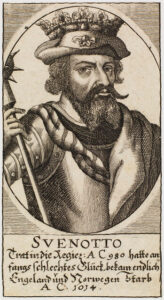
Danish King Sven Tveskæg (986-1014)
This vast domain could not remain intact, however, and was dismembered in 1034, before Canute’s death, but this English reign had prepared the ground for the claims that in 1066 led to the battles of Stamford Bridge and Hastings and the Norman conquest.
The impact of the Scandinavians in Western Europe shows marked geographical differences. Apart from place names and a few isolated burials, there are no finds from the Viking period, nor is there evidence of any influence of Viking art in Normandy or Brittany, or elsewhere in France.
Scandinavian burials are also not numerous in England, where they mostly belong to the 9th century, attesting that the population had rapidly integrated.
If during the years of raids and war artistic production disappeared in both northern and southern England, with the beginning of the 10th cent. a new Anglo-Scandinavian art developed in the north, characterized moreover by the adoption of iconographic motifs and themes previously unknown to both cultures.
On the Western Isles and the Isle of Man the Scandinavian elements of the early 10th century were absorbed into a mixed Scandinavian-Celtic culture by the end of the century. Viking towns on the Irish coast equally show-judging from annals and artifacts found in excavations in Dublin-a dual-rooted culture by the end of the 10th century.
In the late 11th cent. the Scandinavian type of ornamentation played a certain role in the revival phase of Irish art, a phenomenon, however, that does not appear possible to trace back to the nuclei of people of Scandinavian origin.
The settlement of the Vikings in Russia, linked mainly to the Swedes and aimed, it seems, primarily at trade, led to markedly different results than in Western Europe.
The oldest remnants of a Scandinavian mixed culture were found in the 8th-century archaeological layers of excavations conducted at Staraja Ladoga, located at the point of access to Russian waterways coming from the Baltic; other Scandinavian settlements were founded during the 9th century: notably Novgorod on the Volkhov and Kiev on the Dnepr, in the direction of the Black Sea and Byzantium.
The main cities were ruled by people of Scandinavian or mixed Scandinavian-Slavic descent; the gradual transition from Scandinavian to Slavic ethnic dominance is revealed, however, by the change of name of the princes of Kiev, around the middle of the 10th century.
Vladimir I
When Prince Vladimir I (980-1015) converted to Christianity in 988 the influence of Byzantium became dominant, which on the cultural level gradually replaced the Scandinavian element.
The settlement and trade of the Vikings in Russia seem to have taken place mostly peacefully.
The emergence of a Russian state in the 11th cent. under the hegemony of Kiev appears to be the direct result of the mixing of Slavic, Scandinavian and Byzantine elements.
In the Tardovich period, a number of Scandinavian mercenaries served in the Byzantine imperial army as part of the so-called Variegated Guard, i.e., the Byzantine emperor’s guard corps.
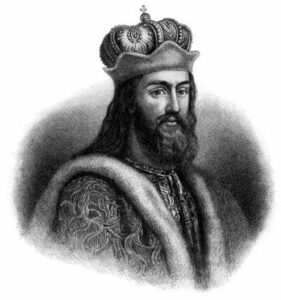
Vladimir I (980-1015)
Harald Hardrada
The best known of its commanders was Harald Hardrada, later King of Norway (1047-1066), who spent the years between 1034 and 1043 in Byzantium.
Despite many links with Constantinople and areas of Russia subject to Byzantine influence, there is no indication that Byzantine art or Orthodox Christianity had any reflection in 11th-century Scandinavia, so as it is not possible to identify a Slavic artistic influence.
Apart from the Anglo-Danish interval, political development in Scandinavia proceeded in synchrony with that of Western Europe: in the second. 8th-9th, the government was probably exercised by chiefs who allowed regions to be dominated by local clans, while in the 10th the sovereigns brought more vast territories under their power; by 1066 the boundaries of the Scandinavian od. states are roughly defined.
Probably the most important innovation in Scandinavian society is the founding of markets and cities. From the Migration Age until the Viking period, Helgö, on Lake Mälar in central Sweden, had maintained trade contacts with places at a great distance and had been a center of specialized trades, including metalworking.
Stable trade centers were established-probably at royal initiative-with the Ribe market on the west coast of Jutland in the early 8th century, followed by Hedeby, on the Baltic Sea in southern Jutland, Birka, on Lake Mälar, and Kaupang, on the Oslo Fjord, around the 1800s.
These cities were relocated to new sites around the years 975-1000, and excavations conducted at the original sites led to new and extensive knowledge about economics, trade, nutrition, health, building practices, and crafts.
Frisian sceattas in the earliest archaeological layers, at Ribe, show that they were used there by traders; in the early 9th century coins from Dorestad in the Netherlands were copied from Hedeby in early Scandinavian coinage.
Early Scandinavian coinage-which did not become stable until the 11th cent. in the time of Canute the Great, Harald Hardrada of Norway and Olaf Eriksson Skötkonung (980-1021/1022) of Sweden-was exemplified on the Anglo-Saxon model.
On royal initiative, new cities were founded around the year 1000: e.g., Sigtuna in Sweden, Trondheim and Oslo in Norway.
Aarhus, Odense, Ribe and Lund in Denmark were all founded well before 948. Shipbuilding was the main trade in the Viking period.
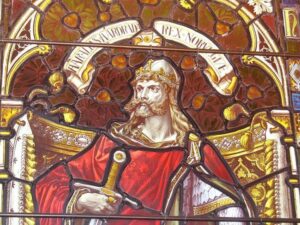
Harald Hardrada
Viking ships
For warships and cargo ships, the ability to hold the sea was the basis of both raids and trade and discovery. An early stage of ships built with overlapping planking, which could only be rowed, is represented by the Nydam ship (Schleswig, Archäologisches Landesmus.), from the Migration period.
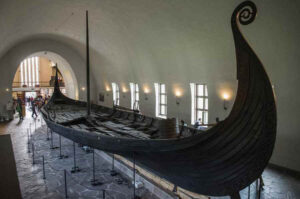
Nydam ship
Both the so-called historiated stones (c. 800), from the island of Gotland, and the ship from Oseberg show that the combination of sailing and rowing had been established well before the 1800s.
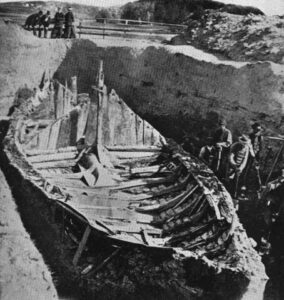
Gokstad ship
The Gokstad ship (Oslo, Vikingskipshuset Mus.), built c. 905, as dendrochronological analysis has shown, has no carved decoration but its constructional forms are aesthetically outstanding; the widespread use of this type of vessel also demonstrates its technical qualities.
The development of decorative arts in the Nordic countries (see Animalistic, Styles) helps to detail the basic historical pattern.
Many innovations can be linked to trade routes, settlements, and, of course, conversion to Christianity. Decoration forms the backbone of chronology, the main lines of which have recently received substantial confirmation from dendrochronology.
With some important exceptions, the stylistic development seems to be the result of indigenous traditions and formal innovations. The only two iconographic motifs that counted on an unbroken tradition were the ribbon-like animal created in Scandinavia around 500 and in use until c. 1100. – and the mask, which dominated Viking art between 800 and 1000.
Most of the other motifs, of innovative value, were introduced based on Western European models and are found to be widespread only in certain periods. Proto-Viking decoration began with a number of innovations in the last generation of the 8th century.
The indigenous element consists of zoomorphic motifs of the animalistic III E style. Animals are typically shaped in ribbons, with swelling and thinning bodies, frequently cut by wide openings and with a marked contraction separating the two bulging sides.
The same workshops employed semi-naturalistic animals and birds probably copied from Frankish models. In most cases they were stylized with swollen lines, disjointed bodies, and interlaced elements of the III style.
The so-called prehensile-footed animal (Greiftier) was introduced at this stage: derived probably from the animal, similar to the squirrel, that inhabited the Anglo-Saxon volutes of the 8th century, it always presents a frontal face and its body is rendered as a solid entity, in contrast to the open manner of the III E animalistic style, with which the other animals are represented.
The splendid gilded bridle trimmings (Stockholm, Statens historiska mus.) from a 775-800 burial at Broa on the island of Gotland exemplify a master’s use of all three types of motifs and manners. The wooden carvings from Oseberg constitute another notable example, produced in this case by different hands, and some disc fibulas from Gotland Island similarly combine the III style and the prehensile animal; from the typological aspect, the oldest form of oval fibula is decorated with engraved animals of the III E animal style.
The oval fibula is a type of jewelry specific to women’s clothing of the Early Viking and Middle Viking periods.
The earliest examples with the prehensile animal motifs were found in the 8th-century strata at Ribe, where the seasonal workshop of a craftsman was identified who produced jewelry of different types, through the casting process, with decorative motifs once ascribed to the influence of early 9th-century Carolingian classical art.
With Ribe’s dates, based on Frisian coins and the results of dendrochronological analysis, the introduction of the prehensile animal can be solidly placed in the second half of the 8th century, that is, well before both the earliest Viking raids and the classicism of Charlemagne’s time.
There is no trace of a Viking development that could explain the prehensile animal motif as an indigenous innovation; 8th-century England is the only area that can provide good parallels both for the motif per se and for its humorous rendering, with the squirrel-like animal carved on Anglo-Saxon Classical lithic crosses of the 8th cent. 8th century and with the witty cat-like animals painted in one of the few surviving manuscripts, datable to around 800 (London, BL, Cott. Tib. C.II, c. 5v; Haseloff, 1951b).
The second half of the 8th century stands out, therefore, as the main period of innovation in early Viking decoration. The adaptation of Western European motifs to indigenously produced types of objects was combined with stylistic and technical innovations well before Viking raids began.
Such adaptation, therefore, sheds light on a thriving society that had good trade contacts. Findings from this period at Ribe and, from c. 800, at Hedeby and Birka also make it possible to assume that these early towns played a central role in such early developments.
Contrary to what has often been believed, there are no obvious traces of foreign influences due to the early Viking raids, as shown by the very important carved woodwork found in the Oseberg viking ship-sepulch in the Vestfold.
Following the excavation (1904) of the Oseberg tomb, the study of Viking art underwent a sensational breakthrough.
Dendrochronology has recently provided precise dates: the oak used to make the vessel was cut in 820, which makes it possible to date the sculptures with certainty; the burial chamber was built with cut oak instead in 834, a year that thus constitutes a termine ante quem for dating all the artifacts that were contained in the tomb.
Moreover, this chronology fully coincides with the traditional dating of the carvings assumed on the basis of stylistic analysis.
The deceased was likely to have been a queen, who was buried with a slave girl beside her; her grave goods included a complete set of items for a royal family, including pets, but having been looted no jewelry was preserved.
The loss is compensated, however, by some exceptional wood carvings: among the richly carved objects are a cart, three sledges, a spare sled pole, five uprights with animal protomers (probably furniture finials), poles for two tents, and four beds.
The carvings show several personal styles, ranging from the meticulous and delicate rendering in Salin’s animalistic III E style of the zoomorphic head, the work of the Academic Master, to the massive relief and rough-hewn motifs in Oseberg’s style, the work of the Impressionist Master; whether these makers represent different stages within a chronological development or whether their works are roughly contemporary remains an open question.
The ship is fairly wide, rather flat-bottomed, perhaps because it was the equivalent of a real boat, designed for voyages along the coast; the bow ends in a spiral, snake-headed shape, and the stern ends in a tail.
The spiral-bodied snake was to become a common iconographic motif in pendant jewelry of the Middle Viking period: moreover, some 13th-century texts refer to warships as ‘dragons’ or ‘snakes.
Along the bow of Oseberg’s ship are interwoven animals in the III E animal style, carved in bas-relief, perfectly designed to follow the outline of the panel; the same artist presumably carved the fat and funny prehensile animals placed on the tingl, i.e., the panel separating the bow inside the ship.
In combining motifs and differentiating the two-dimensional bas-relief for the animals of the III style from the graduated relief for the prehensile animals, the Master of the Ship, from the 820s, was fully within the tradition of the late 8th century.
The innovations of the Oseberg style proper are demonstrated by the sculptures attributed to the Baroque Master, who developed motifs from the evolved forms of the semi-naturalistic prehensile animal types introduced in the III E animal style, while the ribbon-like animals played a secondary role.
The innovations were mainly formal. The compositions presented motifs of equal size and equivalent compositional value, arranged to create a pattern in infinite ratio. Stocky animals were preferred, and the plasticity of the graduated relief contributed to a new play of chiaroscuro.
Oseberg’s style was used for a wide variety of metalwork and must have achieved great popularity. In particular, some of the oval and original equal-arm buckles reflect the personal manner of their initiators, although most of the surviving examples can be attributed to executors who copied.
The town of Birka may have been the center of production of some of the most original oval buckles, and certainly some of the two most popular series produced on a large scale were also cast in this town.
For the Oseberg style proper, elements of foreign influence cannot for now be identified, and it appears to be the result of a local development based on late 8th-century innovations.
The concept of the Borre style derives from a series of harnesses discovered by chance in the 1850s, following the leveling of one of the large Borre mounds in the Oslo Fjord.
The Borre style first recorded artistic innovations resulting from the looting and trading of the Vikings. An impressive number of copies and adaptations from metalwork from the continent were produced in the decades around 900.
Craftsmen produced a new style by innovatively transforming ribbon weaving-probably of late Carolingian origin-into the geometrically designed knotweaves, hoop chains, and pretzel knots.
The prehensile animal was reduced to a geometric shape but retained its main features, while the new semi-naturalistic animals probably reflected European models.
The same craftsmen copied Western metalwork decorated with plant motifs; particularly interesting are the trefoil fibulae with acanthus and vine shoots. In the Frankish kingdom these garnitures were used to fasten the leather of baltei, but in Scandinavia they were both reused and imitated as women’s buckles.
The magnificent gold gasket (Oslo, Univ. Oldsaksamling) from the Hoen treasury in south-central Norway, laid down c. 875, is an early example of reuse as a brooch. The three-lobed fibula became immensely popular, and Scandinavian versions were produced in all sizes and with ornamentation ranging from the faithful copy derived
from Frankish models to the prehensile animals of the Borre style, to-in the last phase-the ribbon-like animals of the Mammen style.
Copies derived from Anglo-Saxon models are not as numerous, but some of them appear extremely faithful and well-made. Notable is the lack of imitations of the many Irish and Northumbrian garnitures, found mainly in graves on the west coast of Norway (Wamers, 1985).
Most of these insular pieces are decorated with Kerbschnitt-carved interlace, in a style derived directly from Salin’s II style; not only were they not imitated in Scandinavia, but there is also no indication that their decoration ever influenced Viking ornamentation: this suggests that the II style interlace type in Scandinavia was considered outdated and that the insular pieces must have been an object of curiosity, but were not produced by contemporary goldsmithing.
Some prestigious finds make it possible to define what innovations were being made in the field of metalwork at the courts of rulers or chieftains. Of great interest is the aforementioned Hoen gold treasure, discovered in 1834, which, with its fifty-two pieces (totaling 2.5 kg of gold), is one of the richest in Europe.
It consists mainly of Carolingian and Scandinavian goldsmithing, of extremely fine workmanship, and includes the famous trefoil fibula decorated with an acanthus motif, probably made in Reims; twenty coins date the deposit to about 875.
The Frankish objects were clearly part of an exact ransom in northern France, repurposed, however, and brought along with the Scandinavian pieces. Scandinavian gold filigree at Hoen is of the same exquisite quality as Carolingian filigree and displays numerous novel elements that would later become usual in Borre’s style.
Examples include a large circular pendant decorated with masks and also the way atypical prehensile animals were arranged within arched plates.
The superb gold spur and plates from Voerne (Oslo, Univ. Kulturhistoriske Mus. ), in southeastern Norway, constitute a slightly later example of goldsmithing in a princely setting.
The technique is admirable, though lacking the remarkable execution minuteness of the Hoen pieces, and the combination of prehensile animal heads with squares and pretzel knots is typical of Borre’s style in its mature phase, around 900, but the decoration has no precise equivalent in mass-produced metalwork.
The Jelling style includes a group of ribbon and S-shaped animals; the name comes from the engraved silver bowl (Copenhagen, Nationalmus.) found in the tomb of King Gorm the Elder in Jelling, Jutland.
The wood used for the burial chamber was cut in 958-959, according to dendrochronological analysis. Animals of the Jelling style-used partly at the same time as the Borre style-appear to have come into use shortly after 900, probably created in the mixed Anglo-Scandinavian environment of northern England, or Danish with close ties to England.
The two styles were usually mixed, so that the Borre style motifs were given a more open and less geometric shape, while the animals of the Jelling style could be drawn with a pretzel knot of the Borre style; both appear together in mass-produced silver filigree buckles and pendants.
A bag containing such pieces of filigree, found in the port of Hedeby (Schleswig, Wikinger Mus. Haithabu), exemplifies the variety of designs available to an itinerant craftsman.
Together, Borre’s and Jelling’s styles cover the Middle Viking period, and the large quantity of mass-produced metal ornaments from about 875 to 975 are decorated in these styles and in styles derived from them.
Borre’s was also the earliest Scandinavian ornamental style used in Viking settlements outside the region of origin, but it should be noted that the influence of Middle Viking period ornamentation in areas outside Scandinavia remained limited to northern England, the Isle of Man, the western Atlantic islands, and Russia, while it appears conspicuously absent in Normandy and other parts of the Frankish kingdom and is found only very rarely in Ireland.
The creation of original ornamentation in the Late Victorian period seems to be intimately connected with the conversion to Christianity and the founding of the Scandinavian Church.
With the Mammen style came the introduction of a new additive mode of composition-a specifically Scandinavian way of rendering plant motifs, transforming them rather than simply copying them-and an entirely new repertoire of motifs: lions, birds, snakes, fights between an animal (often identified as a lion) and a snake, all originating in Western Europe, probably Ottonian.
The name Mammen refers to the rich burial chamber of a chief (Copenhagen, Nationalmus.; Mammen, 1991), built in the years 970-971 in Jutland, where an axe blade was found with typical plant and aviforms motifs inlaid in silver. Mammen’s style apparently developed in the court of King Harold Blaatand Gormsson of Denmark (d. in c. 987), following his conversion to Christianity in the mid 960s of the 10th century: his monuments in Jelling are an impressive symbol of the meeting of pagan and Christian Scandinavia.
The style may have been created for the use of the nascent Church; a whalebone reliquary (León, Mus.- Bibl. de la Real Colegiata de San Isidro), highly refined and openworked, testifies to its use in church furnishings and leads one to consider the possibility that the superb caskets from Bamberg (Munich, Bayer. Nationalmus.) and Cammin (lost in World War II) may also have had an original function as reliquaries: probably made at the Danish court, such artifacts must then have been sent as royal and episcopal gifts.
Parallel to its ecclesiastical use, the Mammen style is also found as a normal style of ornamentation on weapons and jewelry; from the second half of the 10th century, however, finds are very scarce and there is almost no presence of objects in this style in Scandinavian settlements abroad.
For that matter, in England contact with Scandinavia reached its lowest point after the fall of York in 954; in Scandinavia itself, moreover, funerary customs changed and, roughly after 950-975, tombs containing mass-produced personal ornaments, which constitute the major source of information for the Middle Viking period, disappeared.
This phenomenon may have been due in part to Christian influence, but other factors were probably more important, such as an evolution in the fashioning of clothing, which involved the replacement of the pair of oval female brooches with a single silver filigree brooch, a metal that was not buried with the deceased but preserved and hoarded.
Second, economic surplus seems to have disappeared as a result of the end of Viking raids in the West and the import of silver from the East.
Although Scandinavians of the Late Viking period obviously continued to use ornaments and decorated weapons, the dominant group of society generally did not bury their wealth with the deceased, and to flaunt their status they particularly preferred to erect ornate churches and memorials, as first documented in the examples from Jelling.Jelling is located inland from Vejle, at the important Viking road that led from N to S across Jutland.
Not much is known relative to its history, but it was the seat of King Gorm (d. in 958/959) and probably his son Harold, but the latter-or his son Sven Tveskæg-moved the seat and the royal funeral church to Roskilde on Sjœlland.
At Jelling, the monuments constitute an impressive document of the change of religion in Denmark and are manifestations of power and artistic innovation (Krogh, 1982).
They consist of two huge mounds: the north mound, built in 958/959, which originally contained the burial of King Gorm but was later emptied, and the south mound, erected in several stages in the 1870s, which was empty.
The mounds flank a church, whose original wooden building, erected by King Harold, was replaced by two other wooden ones before the present stone one was built around 1100. Immediately S of the church are two runic stones; the smaller one was erected (ante 958) by King Gorm in memory of his bride Thyre: it bears an inscription set in vertical columns-as is usual for runic inscriptions-and its only decoration is a serpent’s head and two pairs of spirals at the end of the text.
The other runic memorial is a large gneiss boulder that King Harold had erected and decorated probably in the 1060s.
The long inscription is arranged horizontally-which is quite unusual and would reflect manuscript patterns-and the text is tripartite: its initial and main portion, on face A, framed by the coils of a serpent, commemorates Harold’s relatives and implicitly his royal lineage and his claims to Denmark by inheritance; the text continues on face B, below the emblematic lion wrestling with a serpent, and emphasizes Harold’s achievements, ending on face C with a proclamation of the conversion of the Danes below a Crucifixion.
Text and decoration seem to be connected (Fuglesang, 1986a): the serpent on face A may have had chthonic overtones, the lion fighting the serpent on face B may be a reference to the lion of Judah-but is based, more likely, on contemporary battle banners and insignia of the rulers of Europe-while the Crucifixion presumably had a Carolingian pattern on a background of intertwined vine shoots.
Jelling’s monuments should be considered of enormous importance for the art history of Scandinavia; moreover, as a historical document, they are unparalleled in Europe at the time. The mounds, an expression of ancestral power and pagan religion, flank King Harold’s ecclesiastical building and runestone, which instead manifest, in writing, conversion to Christianity.
It is also remarkable that, according to current dating, the south mound would have been erected after the construction of the church and the king’s stone. It follows that it is possible to speculate that the mounds were not necessarily pagan monuments, but may have been used as visual symbols to denote royal magnificence and ancestral power.
The elevation of the south mound created an axial and symmetrical layout that appears to have conformed to the aesthetics that seem to have guided the builders in the service of this king.Fortresses of the Trelleborg type, with a rigid circular defensive layout surrounding square square plazas with symmetrically arranged ‘longhouses,’ constitute another important type of construction that dendrochronology now dates with certainty to the reign of Harold.
The function and origin of the fortresses have long been a matter of debate; the current opinion that they were royal strongholds used during internal unrest rests on solid grounds, while the supposition that their geometrically regular layout was a local innovation is speculative, although it appears to be supported by the evidence of the rigid regularity that characterizes all the works that dendrochronology dates to the reign of Harold.
The Ringerike style took its name not from an important find but from a geological formation: the sandstone of the Ringerike region of Norway. This material was used for two spectacular historiated stones (Oslo, Univ. Kulturhistoriske Mus.) from Alstad and Dynna in southern Norway.
The Ringerike style flourished in 1000-1050 and was gradually replaced by the Urnes style in the third quarter of the century.
Its animalistic motifs developed from those introduced with the Mammen style, and the innovations mainly concern the types and compositions of the plant motifs: the characteristic and asymmetrical groups of tendrils seem to have been derived from the ornamentation of Ottonian manuscripts, while the alternating composition of tendrils and lobes is based on Anglo-Saxon art. Ringerike’s is the earliest of the Viking styles used in Norway and Sweden for Christian runic memorials; in Iceland, it was employed on the Flatatunga wooden panels (Reykjavik, Thjódminjasafn Íslands), which are the oldest surviving fragments of Scandinavian church decoration.
The style is also well documented in splendid works executed in metal, which include weapons and jewelry, as well as everyday objects from the oldest archaeological layers in Norwegian cities.
Ringerike’s style, moreover, was influential in England during the time of King Canute, where it is also witnessed in the south of the country and where it recurs in particular in the decoration of two Anglo-Saxon manuscripts (Cambridge, Univ. Lib., Ff. 1-23; Rome, BAV, Reg. lat. 12); this is in contrast to the ornamentation of the Middle Viking period, which was concentrated in areas of Scandinavian settlers’ settlement, and the Mammen style, which was not adopted on the island.
The Ringerike style and the later Urnes style had little impact in Russia, thus attesting to the fact that Scandinavian influence in that country was now in decline.
The Urnes style is also closely associated with the nascent Church. It was first established in the second quarter of the 11th century but remained popular throughout the century until it gradually merged with the Romanesque style and was overtaken by it in the first quarter of the 12th century.
The Urnes style was a Scandinavian innovation, as the animal and snake motifs are built on those of the Mammen and Ringerike styles, but the sinuous forms and asymmetrical composition of circular open laces create an entirely new stylistic ensemble; the most notable example is the Urnes church in Sogn, Norway, which gave the style its name.
A portal, two panels, a post and two pediments from the mid-11th-century church were reused in the Romanesque od. stavkirke, erected in 1130-1131 (see Urnes). In contrast to the compositional system by juxtaposition and addition of disparate motifs, characteristic of older Scandinavian art, the Urnes church was homogeneously decorated from beginning to end with identical motifs, composition, and form.
The use of animal motifs for church decoration is an interesting phenomenon; in particular, the fight between the lion (or quadruped) and the snake (or snakes) is often regarded as an iconographic theme of pagan tradition, but it does not appear in Scandinavian art before the conversion to Christianity; there are therefore reasons to believe that it was first introduced at the court of Harold in the 1660s, with the Jelling stone as the earliest preserved example.
In a Christian context the motif could have apotropaic value or symbolize the lion of Judas defeating the satanic dragon, but it was also used on secular objects, such as weapons, fibulae, wooden spoons and so on, and consequently its Christian value should not be considered absolute.
Swedish runic memorial stones form the other major group of Christian monuments in the Urnes style. The custom of decorating runic stones began in Denmark with the Mammen style, probably starting with the memorial stone of King Harold at Jelling (Wilson, Klindt-Jensen, 1966), but neither in Denmark nor in Norway was more than a small number of these stones ever erected. The Danish stones, dated to the late 10th century, are all in the Mammen style, while the specimens in Norway belong to the Ringerike style and date to the beginning of the following century.
It was in Sweden that this type of monument became an important symbol, going, it seems, also to constitute a new field of activity for some excellent craftsmen. Approximately two thousand of these works survive in Sweden, more than a thousand hundred of them in the Uppland region alone; they belong fully to the Christian era, 65 percent decorated with a cross and 25 percent with a Christian invocation.
The iconographic motifs include mainly animals-mostly ribbon-like, as well as quadrupeds and snakes-in the style of Urnes, of which it has sometimes been assumed that they had pagan or crypto-pagan significance and were the result of a pagan reaction in Uppland; in any case, the combination of lion and snake first appeared in Scandinavia only with the conversion of Harald, and the subsequent introduction of the theme in Norway and Sweden coincided with the adoption of Christianity in these countries.
The Urnes style was used in England even after the Norman Conquest, but it was in Ireland, beginning in the late 11th century, that it was combined with traditional Irish zoomorphic decoration and new continental elements as part of a renewal process that especially affected ecclesiastical art.Although pagan idols are mentioned in 13th-century sagas, they do not appear in the earliest texts of Christian legislation and are actually very rare in contemporary Viking accounts.
In 922 the Arab traveler Ibn Fadlān (Kitāb; Canard, 1958) met Viking (Rus) traders on the Volga and noted some of their customs, describing how a merchant erected a pole to represent a god, surrounded by smaller poles symbolizing his family: the merchant made a sacrifice with food to the main god, asking for his help in concluding a good deal the next day; later, if the deal was not to his satisfaction, he would also sacrifice to the ‘family,’ with the same invocation.
Ibn Fadlān’s description indicates considerable freedom in the way the deity is represented and a bluntly utilitarian use. The only sculpture certainly depicting a Viking deity is the Ithyphallic statuette (Stockholm, Statens historiska mus.) from Rällinge in Södermanland, Sweden, which, judging from an engraved decoration on the back, would date from the early 11th century, a surprisingly advanced date.
Adam of Bremen in the Gesta Hammaburgensis Ecclesiae pontificum, from the 1770s. 11th, describes the pagan temple at Uppsala in Sweden, blood sacrifices and idols of Odin, Thor and Freyr; since Adam of Bremen’s text is, however, riddled with errors regarding the conditions in Sweden and Norway, it is no longer considered trustworthy (Uppsalakulten, 1997), and his description of the temple and idols may rather reflect literary models derived from Roman sources or the lives of missionaries, although it nevertheless remains noteworthy that the Rällinge statuette corresponds to what Adam of Bremen reports of the Freyr idol in Uppsala.
Narrative images have been preserved on Gotland memorial stones dating from c. 800, on a few Viking Christian monuments in Gosforth, Cumbria, from the mid-10th century, on crosses from the Isle of Man in the 10th and early 11th centuries, and on a small number of Scandinavian memorial stones from the Late Viking period; these are joined by fragments of textiles (Oseberg, Tune) and wooden sculptures (Oseberg) from Norway.
Three scaldic songs, from the 9th-10th centuries, describe images, as do perhaps some other fragmentary poetic pieces.Gotland memorial stones, from the 8th-9th centuries, constitute the only homogeneous group of monuments of this type.
The motifs that recur most frequently and are rendered in larger sizes are the sailboat with crew and a horseman; together they could depict the deceased’s journey to Walhalla or indicate their social level of membership or even reflect beliefs related to funeral rites, such as the ship burials with horse sacrifices at Oseberg and Gokstad. These interpretations should probably be seen as complementary, rather than such as mutually exclusive.
Additional smaller scenes with themes derived from myths and sagas appear on most Gotland stones. Fairly well established is the identification of the Pangermanic story of Völund the blacksmith, also depicted on the 8th-century Anglo-Saxon-made Franks Casket (London, British Mus.).
Thanks to Bragi Boddason’s contemporary scaldic chant, which describes some of the images painted on a shield, scholars have identified one of the Gotland scenes as the Scandinavian fable of the witch Hilde-who induced her father and husband to an eternal battle and slaughter (the Battle of the Haddings)-while others are believed, with less certainty, to depict the Scandinavian myth of Thor fishing the Midgard serpent and the heroic saga recounting the slaying of Ermanaric.
Other images from this period appear on the Sparlösa memorial stone in Västergötland, Sweden (knight with sword and animals, ship, bird, building: perhaps a mythical hunt or perhaps the journey to Walhalla), and on textile fragments from Tune in Östfold, southern Norway (ship and figures; Oslo, Vikingskipshuset Mus.) and from Oseberg.
The Oseberg textile, which is much damaged, consists of several fragments and is difficult to decipher: one portion shows a procession of loaded chariots, horsemen, warriors, and women on foot or in chariots, which could depict a religious procession but is probably a tale, perhaps from a Migration-era fable; another portion depicts a tree, probably with men hanging from it, while a third scene shows a possibly battle image of men with shields, spears, and a chariot. It is unclear whether the different fragments of the Oseberg fabric formed a continuous narrative or whether they depict scenes derived from different narratives.
There is a lack of pictorial evidence in Scandinavia between the mid-9th and mid-10th centuries. This gap can be somewhat filled by the skaldic songs describing scenes historiated on shields and walls: two of them recount the scene of Thor fishing the Midgard serpent; but it is only with the stone reliefs at Hördum, Denmark, and the memorial stone at the church in Altuna, Uppland, both dated to the 11th century, that a corresponding iconography survives in Scandinavia.
The Altuna stone is also interesting because it possesses the only explicitly pagan scene among all the Uppland monuments.The Anglo-Scandinavian environment of the 10th century in northern England created new iconographic types, which were, however, of only local importance.
On the large lithic cross in Gosforth, Cumbria, a Crucifixion was associated with a hunting scene. Another depiction, also unknown in other monuments, is read as the interpretatio christiana of the Scandinavian Ragnarök, that is, the twilight of the gods.
Stone crosses from the Isle of Man depict two new types of scenes destined to be taken up in the Scandinavian homeland in the 11th century: the hunt and the saga of Sigurd.
These are, in both cases, honorific rather than mythological themes, the adoption of which in Scandinavia soon after the conversion to Christianity would indicate an intention to avoid pagan themes.
The last Scaldic chant describing pagan scenes, dated c. 985, concerns depictions on the walls of a new hall in Iceland, including the funeral of the god Baldr in the presence of all the gods; a giantess, who had helped them put the funeral boat in the water, was riding a wolf with snakes instead of reins.
This giantess is possibly depicted on a stone in Hunnestad, Scania, a locality where, on another stone in the same family monument, a cross appears engraved; if the interpretation of the Hunnestad riding figure is correct, this would be the only example in Scandinavia of a pagan scene in a Christian context.
The earliest Christian work in Scandinavia is a filigreed cross from the first half of the 10th century (Stockholm, Statens historiska mus.), from a burial at Birka: the figure of Christ on this, and on later pectoral crosses, is stylized but easily recognizable and untainted by pagan elements.
The iconography of the Crucifixion amid intertwined vine branches on the royal monument at Jelling derives-as do the vast majority of crucifixions-from Western Europe and, transplanted to Scandinavia, underwent modifications only in style.
Of the Christian narrative images, few in the surviving material, the most important is the Adoration of the Magi on a memorial stone from the first half of the 11th century (Oslo, Universitetets Kulturhistoriske Mus.), from Dynna, Norway. Such scenes probably depended on continental prototypes, but stylistic transformations influenced their iconography.
On the Flatatunga panels, the upper area shows a leafy decoration in the Ringerike style, while a row of saints appears below, which in the 11th cent. could hardly have been anything other than the apostles; this original depiction was therefore probably a Maiestas Domini, a theme frequently used in continental Europe on the eastern termination of the choir.
The practices of pagan religion are difficult to ascertain, since sources are rare and late, but the main lines can be discerned, verifiable through the scaldic verses.
There were both private rites, regulated by the head of each family, and official rites presided over by kings or counts. The major Viking deities (Asi) corresponded to the usual Germanic pantheon: Odin (war, poetry), Thor (strength), Freyr (fertility), Freya (love, death, battle), gods who seem to have supplanted a number of deities who personified the forces of nature (Vani), the worship of whom nevertheless seems to have continued in parallel with that of the Asi. Myths, often also amusing, relating to all the gods, are known until the year 1200, when they were used by Snorri Sturluson (1179-1241) in his work Gylfaginning (‘The Fascination of Gylfi’), about Nordic poetry and kenningers.
Conversion to Christianity was a process that began in the early 9th cent. when Anscarius was sent by Ludwig the Pious (813-840) and Ebbon of Rheims (d. after 847) to Denmark and Sweden, where he was allowed to preach to the people and, in the 50s, to erect churches in Hedeby, Ribe and Birka. In the late 9th century there seems to have been a pagan backlash, and the final conversion appears to date from the 1660s in Denmark, the 1890s in Norway, c. 1000 in Iceland, and the first quarter of the 11th century in Sweden.
Based, on the one hand, on the dubious information of Adam of Bremen concerning the pagan temple in Uppsala and the survival of pagan traditions in the Christian era and, on the other hand, on modern Romantic ideas, some early scholars believed that the Romanesque stavkirke of the 12th cent. had developed from a Scandinavian typological variant of the pagan temple. This theory has been definitively refuted (Olsen, 1966), and today it is thought that pagan rites took place in halls belonging to chiefs and kings, buildings that did not qualify as temples from an architectural point of view: the art of architecture-as a building structure capable of satisfying aesthetic, functional, and symbolic needs-seems to have been introduced into the region with Christianity.
Aroldo’s church in Jelling is, so far, the oldest church in Scandinavia documented by archaeological excavations (Krogh, 1982). It has a primitive building technique: the roof was supported by wooden posts driven into the ground, and the walls consisted of vertical planks placed on wooden foundation thresholds resting directly on the ground.
It was, however, a building of impressive proportions, presenting the normal plan of a church with a rectangular nave and square chancel; in front of the chancel was the burial place of a man whom one has reason to believe could be identified as King Gorm; it has been plausibly argued that his son had transferred his body from the original pagan tomb, in the burial chamber of the north mound, to a Christian burial place in the new church.
Jelling is consequently the oldest royal burial church in Scandinavia, testifying that this important function of the religious building, immediately after the conversion, was already known.
Churches with a rectangular plan and built with poles set in the ground are found in most regions of northern Europe (Frühe Holzkirchen, 1982), particularly in the 7th-8th centuries, and seem to constitute the normal typology of the simple wooden church.
In Scandinavia, this type of construction was used for most of the churches of the 10th-11th centuries, traces of which have been found below the present Romanesque churches; the preserved decorations are characterized by zoomorphic motifs in the Urnes or ‘Romanesque-Urnes’ style.
The 11th-century church in Urnes shows how decoration could also cover architectural members, e.g., pediments and other parts, which in 12th-century Romanesque churches were not normally decorated.
The transition from the Late Gothic period church to the fully evolved Romanesque stavkirke occurred in the 12th century, presumably in Norway, where the only examples of such churches survive. Technically, the main innovations consisted simply of a stone foundation below four large foundation thresholds, aimed at preventing the entire structure from rotting.
The typical Romanesque stavkirke features an aisle covered by a very high pitched roof, requiring a complicated system of supports; the high central part of the roof dominates the building’s exterior, which is also enriched by the surrounding porch, carved ornamentation concentrated on the portals and the outer face of the roof beams, and details such as small columns and half-columns taken from European stone architecture (Anker, 1997).
The exterior, which is articulated according to a criterion based on the addition of architectural elements and features separate roofs rising one on top of the other, is fully consistent with the principles of architectural composition dominant in Romanesque architecture on the continent in the 12th century.
The formal conception that characterizes the fully developed Romanesque stavkirke could be attributed to one or a few innovative-minded churchmen with a sound knowledge of both contemporary architecture outside Scandinavia and of wooden building techniques in their own country.
Shop Viking Jewelry
Are passionate about Vikings or Old Norse Mythology? Finding the ideal piece of Norse Jewelry can be challenging, especially if you lack inspiration or don’t know where to look. At Surflegacy, we have a wide range of Viking Jewelry in various styles, shapes, colors, and materials, to accentuate your Viking spirit and look. Visit our shop here

